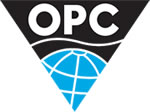
New independent report compares costs and describes environmental impacts, carbon intensity, technology readiness, and delivery time for a range of electricity transmission technologies.
The report highlights:
- Underground cables are, on average, around 4.5 times more expensive than overhead lines;
- An offshore high voltage direct current (HVDC) point-to-point cable is around 5 times more expensive;
- An offshore HVDC network connecting multiple sites to the onshore grid is around 11 times more expensive.
- Alongside costs, it is important that each technology is judged on its merits in each specific grid development context considering environmental impact, engineering challenges and local impacts.
- Supply chain bottlenecks have been reported, especially in cable manufacturing, affecting delivery times and prices, and creating a need for long-term relationships with providers.
The Institution of Engineering and Technology (IET) has released an independent and comprehensive study on the costs of installing high voltage electricity transmission lines overground, underground and sub-sea, aiming to inform the Government's ambitious plans to re-wire Great Britain in the largest grid upgrade since the 1960s.
A major increase in the electricity transmission network's capacity is required to access Britain’s wind energy resources and meet the growing demand for electricity. This expansion will allow generated low carbon power to be utilised more effectively, and ultimately provide consumers with benefits such as greener electricity that is more affordable long term and less dependent on imported fossil fuels.
The report describes in detail a wide range of different options for getting more out of the existing transmission network and for adding capacity to it. It helps to demonstrate the cost of the different technologies. It summarises this in terms of the average lifetime cost of providing 1 megawatt (MW) of new network capacity over a distance of 1 km.
The report provides examples of deployment of key technologies to give specific amounts of capacity over specific distances, taking into account the effects of fixed costs and costs that depend on distance. For example, a typical 15 km long 5000 MW overhead line has been estimated by the report’s authors to have a build cost of nearly £40m, with the equivalent underground cable costing around £330m and, in a new tunnel, £820m. Estimated operating costs are added to the build costs to get full lifetime costs.
It also highlights the importance of considering both cost and non-cost factors, such as visual and environmental impacts, and sustainability. For example, underground cables have lower visual impact than overhead lines, but they are viable only in certain terrains, and have much higher cost; long high voltage AC cables also present electrical engineering challenges. Subsea solutions still require onshore infrastructure to transport power from coastal landing points to areas of demand and have impacts on marine environments.
Professor Keith Bell, Chair of the Project Board for the IET Transmission Technologies report, said: 'As an essential part of the country's aim to reach net zero, the UK is decarbonising its production of electricity and electrifying the use of energy for heating, transport and industry. Access to a cleaner, more affordable, secure supply of energy requires the biggest programme of electricity transmission development since the 1960s.'
Professor John Loughhead, member of the report’s Project Board and IET Fellow and Past President said: 'This report provides a rich information resource on the technology choices for development of the electricity transmission network. It will help inform and stimulate essential discussions between policy makers, local authorities, local communities and bill payers as options are considered.'
Katherine Jackson, member of the report’s Project Board and an energy specialist said: 'The insightful relative lifetime costs are based on several assumptions and will be subject to global inflationary pressures. In practice, the costs and benefits of the different technologies depend very much on the specifics of individual projects, so there is no one-size-fits-all solution.'
Professor Andrew Lovett, member of the report’s Project Board and Professor of Geography at the University of East Anglia added: 'This situation is complex with no simple environmental choices. When deciding between underground cables, overhead lines or subsea cables off Britain's coast, we must consider a complex range of impacts unique to each project. Each technology needs to be evaluated based on its specific context, including engineering challenges, local impacts, and costs.'
David Reid, Global Practice Leader, Integrated Electricity Networks, at Mott MacDonald, and lead author of the report, said: 'The country’s electricity infrastructure will play a vital part in achieving the UK’s net zero targets, but it needs to be significantly expanded and upgraded. This report provides valuable insight into the different technology options available and their relative merits. It will be a vital resource in supporting stakeholders with accelerating the necessary infrastructure development needed for UK society to achieve net zero.'
Mike Reader MP, Chair of the All-Party Parliamentary Group on Infrastructure said: 'This comprehensive examination of the costs associated with electricity transmission network technologies represents a significant contribution to the ongoing public debate surrounding our energy infrastructure and the future of electricity transmission in the UK.'
The report has been coordinated and published independently by the IET. Research and production of the study has been carried out by international engineering consultancy Mott MacDonald. It updates 2012 published data and draws on a broad range of data from manufacturers, installers, operators and other parties.
To find out more about the report, please visit the A comparison of electricity transmission technologies: Costs and characteristics webpage.
Source: Institution of Engineering and Technology (IET)











